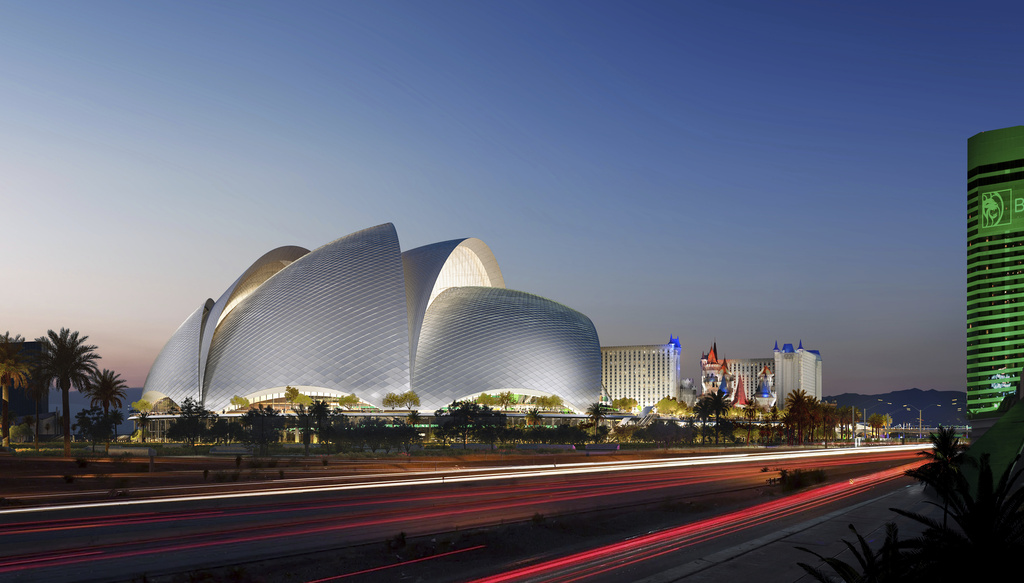Oakland A’s to Invest $1 Billion in New Las Vegas Stadium \ Newslooks \ Washington DC \ Mary Sidiqi \ Evening Edition \ Oakland A’s owner John Fisher and his family have pledged $1 billion to fund a new Las Vegas stadium, with U.S. Bank and Goldman Sachs adding a $300 million loan. The $1.5 billion, 30,000-seat domed ballpark on the Las Vegas Strip is slated for a 2028 opening. Fisher is also actively pursuing local investors, with final approvals expected at a key Stadium Authority meeting in December.

Oakland A’s Lay Groundwork for $1.5 Billion Las Vegas Stadium: Full Story and Investment Details
- Investment Milestone: Fisher family pledges $1 billion to the Las Vegas stadium, backed by a $300 million loan from U.S. Bank and Goldman Sachs.
- Construction Timeline: Scheduled to break ground in spring, targeting a 2028 season debut.
- Stadium Plans: Located on the Las Vegas Strip, the 30,000-seat domed stadium will receive $380 million in public funding.
- Approval Process: Final construction and financing approvals anticipated at December 5 meeting with the Las Vegas Stadium Authority.
- Transition Period: The A’s will play in West Sacramento, California, during the next three seasons as preparations for the new stadium are finalized.
Deep Look
Team executive Sandy Dean presented the details of this investment at a special Las Vegas Stadium Authority board meeting, where he confirmed that an additional $300 million loan has been secured from U.S. Bank and Goldman Sachs. Dean explained that this loan, structured as a five-year commitment, will ultimately be converted to permanent financing once construction is complete. These financial measures, combined with approximately $380 million in public funds, bring the A’s closer to realizing their ambitious plans for a stadium capable of seating up to 33,000 fans.
Final approvals for the stadium’s financing and construction are expected at the Stadium Authority’s December 5 meeting, where Fisher and Dean plan to present four critical letters affirming the project’s financial readiness. The letters will detail the $1 billion family investment, the loan commitment from financial institutions, and a financial review from U.S. Bank confirming that Fisher’s resources are sufficient to meet the equity requirements. Additionally, an entity named Athletics StadCo LLC has been formed to manage the private capital for this project. Dean assured board members that each aspect of the financial and construction plan has been meticulously organized to meet deadlines.
As part of the preparations, a draft lease agreement and property deed were submitted to the Las Vegas Stadium Authority board. Steve Hill, CEO of the Las Vegas Convention and Visitors Authority, expressed optimism that the final documents would be approved in December. “We are on track to meet our December 5 target,” Hill stated, acknowledging a few remaining adjustments, particularly regarding parking logistics, that are being finalized. To maintain transparency, the board plans to make the stadium documents public a few days before the meeting, allowing stakeholders and the community to review the terms before the official vote.
This multi-billion-dollar stadium project represents a new phase for the A’s, who have struggled with attendance and outdated facilities at the Oakland Coliseum. The domed design of the Las Vegas stadium will allow games to proceed comfortably even during the city’s sweltering summer months, when temperatures often exceed 100 degrees Fahrenheit. A retractable roof and climate-controlled interior will offer fans a premium experience, and the stadium’s proximity to the Strip is expected to attract a mix of locals and tourists.
The A’s new Las Vegas stadium will bring Major League Baseball to the city for the first time and is expected to be a significant addition to the city’s already vibrant entertainment offerings. The former Tropicana site, located at one of the Strip’s prime locations, will be transformed into a state-of-the-art facility, with a mix of private and public investments supporting the project. Local leaders and tourism officials expect the stadium to boost Las Vegas’s profile as a sports destination, following the success of the NFL’s Raiders, who moved to the city in 2020.
Dean acknowledged that the final construction budget may see slight increases due to material costs and other economic factors. An updated budget will be presented to the Stadium Authority in December, giving board members a clearer picture of the total costs before approving the project. Despite potential budget adjustments, both Dean and Hill expressed confidence that the project will remain on schedule, and Hill assured board members that parking and infrastructure concerns will be resolved in the finalized documents.
As the December 5 meeting approaches, both the A’s organization and the Las Vegas Stadium Authority remain optimistic that the final details will be approved, clearing the way for construction. For fans and team members alike, the move signifies a fresh chapter filled with possibilities, marking the A’s transition from Oakland to a new home in the heart of Las Vegas’s bustling Strip.







